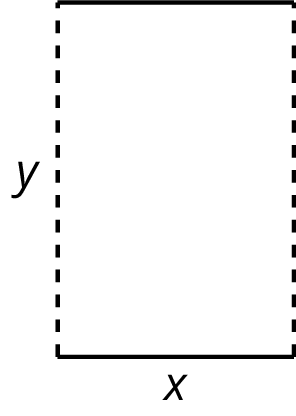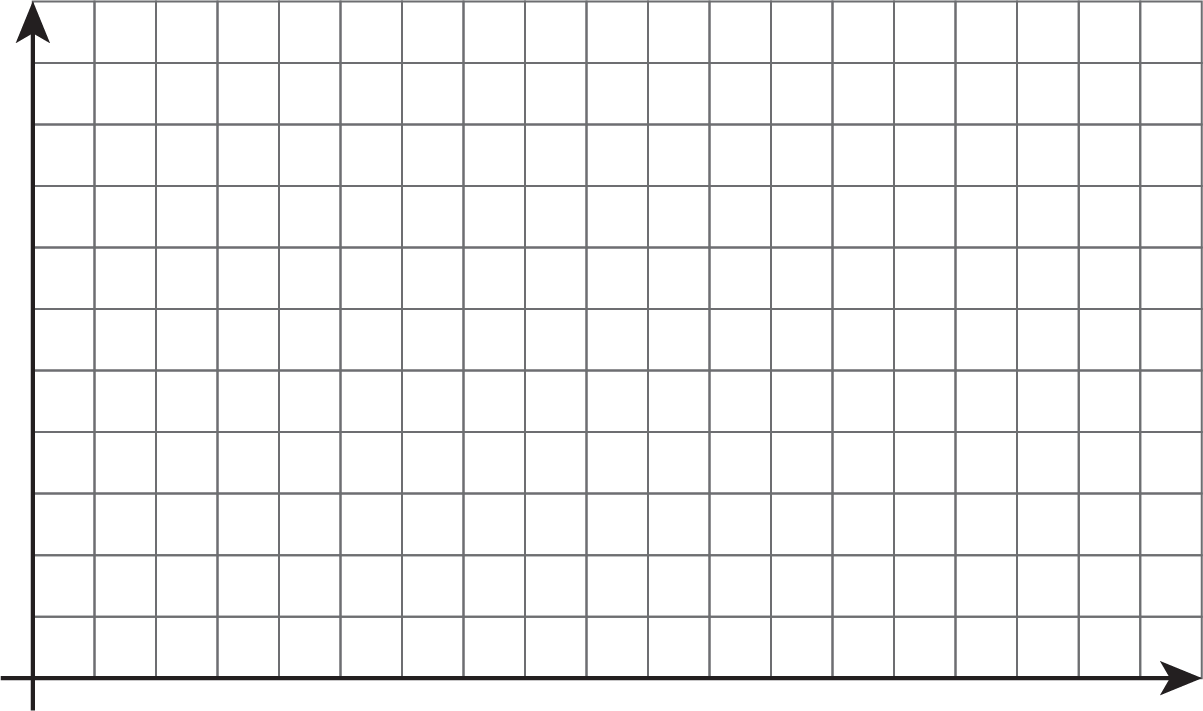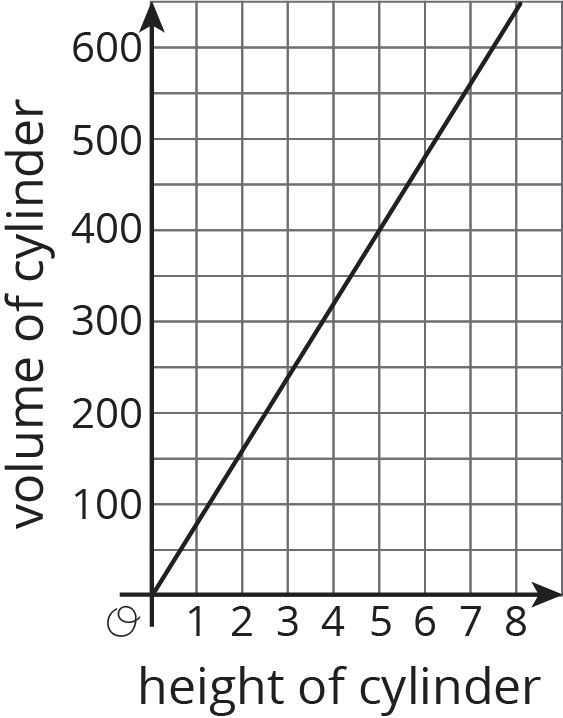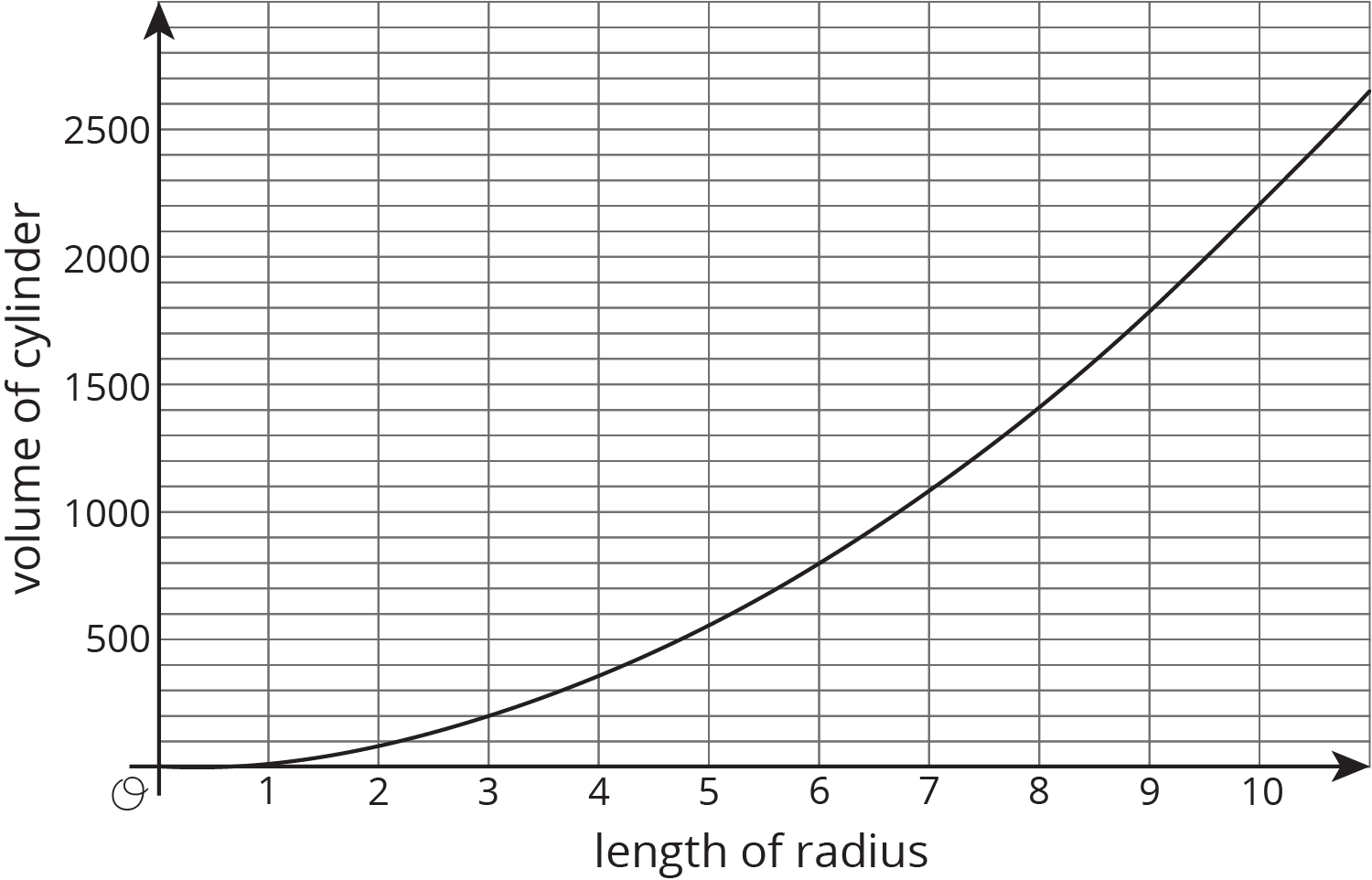Lesson 18
Scaling Two Dimensions
18.1: Tripling Statements (5 minutes)
Warm-up
The purpose of this warm-up is for students to explore how scaling the addends or factors in an expression affects their sum or product. Students determine which statements are true and then create one statement of their own that is true. This will prepare students to see structure in the equations they will encounter in the lesson. Identify students who:
- choose the correct statements (b, c)
- pick numbers to test the validity of statements
- use algebraic structure to show that the statements are true
Ask these students to share during the discussion.
Launch
Arrange students in groups of 2. Give students 1–2 minutes of quiet work time followed by time to discuss their chosen statements with their partner. Follow with a whole-class discussion.
Student Facing
\(m\), \(n\), \(a\), \(b\), and \(c\) all represent positive integers. Consider these two equations: \(\displaystyle m=a+b+c\) \(\displaystyle n=abc\)
- Which of these statements are true? Select all that apply.
- If \(a\) is tripled, \(m\) is tripled.
- If \(a\), \(b\), and \(c\) are all tripled, then \(m\) is tripled.
- If \(a\) is tripled, \(n\) is tripled.
- If \(a\), \(b\), and \(c\) are all tripled, then \(n\) is tripled.
- Create a true statement of your own about one of the equations.
Student Response
For access, consult one of our IM Certified Partners.
Activity Synthesis
Ask previously identified students to share their reasoning about which statements are true (or not true). Display any examples (or counterexamples) for all to see and have students refer to them while sharing. If using the algebraic structure is not brought up in students’ explanations, display for all to see:
- If \(a\), \(b\), and \(c\) are all tripled, the expression becomes \(3a +3b+3c\), which can be written as \(3(a+b+c)\) by using the distributive property to factor out the 3. So if all the addends are tripled, their sum, \(m\), is also tripled.
- Looking at the third statement, if \(a\) is tripled, the expression becomes \((3a)bc\), which, by using the associative property, can be written as \(3(abc)\). So if just \(a\) is tripled, then \(n\), the product of \(a\), \(b\), and \(c\) is also tripled.
18.2: A Square Base (15 minutes)
Optional activity
This activity is optional. The purpose of this activity is for students to examine how changing the input of a non-linear function changes the output. In this activity, students consider how the volume of a rectangular prism with a square base and a known height of 11 units changes if the edge lengths of the base triple. By studying the structure of the equation representing the volume function, students see that tripling the input leads to an output that is 9 times greater. In the following activity, students will continue this thinking with the volume function for cylinders.
Identify students who make sketches of the two rectangular prisms or write expressions of the form \(99s^2\) or \(11(3s)^2\) to describe the volume of the tripled rectangular prism.
Launch
Give students quiet work time. Leave 5–10 minutes for a whole-class discussion and follow-up questions.
Supports accessibility for: Language; Organization
Student Facing
Clare sketches a rectangular prism with a height of 11 and a square base and labels the edges of the base \(s\). She asks Han what he thinks will happen to the volume of the rectangular prism if she triples \(s\).
Han says the volume will be 9 times bigger. Is he right? Explain or show your reasoning.
Student Response
For access, consult one of our IM Certified Partners.
Student Facing
Are you ready for more?
A cylinder can be constructed from a piece of paper by curling it so that you can glue together two opposite edges (the dashed edges in the figure).

- If you wanted to increase the volume inside the resulting cylinder, would it make more sense to double \(x\), \(y\), or does it not matter?
- If you wanted to increase the surface area of the resulting cylinder, would it make more sense to double \(x\), \(y\), or does it not matter?
- How would your answers to these questions change if we made a cylinder by gluing together the solid lines instead of the dashed lines?
Student Response
For access, consult one of our IM Certified Partners.
Anticipated Misconceptions
Some students might think that because you triple \(s\) then you are only tripling one dimension. Encourage these students to make a sketch of the prism before and after the doubling and to label all three edge lengths to help them see that two dimensions are tripling.
Activity Synthesis
Select previously identified students to share whether they think Han is correct. If possible, begin with students who made sketches of the two rectangular prisms to make sense of the problem.
Ask students: “If this equation was graphed with edge length \(s\) on the horizontal axis and the volume of the prism on the vertical axis, what would the graph look like?” Suggest that they complete a table showing the volume of the rectangular prism when \(s\) equals 1, 2, 3, 4, and 5 units (the corresponding values of volume are 11, 44, 99, 176, and 275 cubic units) and then sketch a graph using these points. Give students quiet work time and then select a student to display their table and graph for all to see. Ask students what they notice about the graph when compared to the graphs from the previous lesson (the graph is non-linear—the volume increases by the square of whatever the base edge-length increases by).
Design Principle(s): Support sense-making; Optimize output (for generalization)
18.3: Playing with Cones (15 minutes)
Optional activity
This activity is optional. In this activity, students continue working with function representations to investigate how changing the radius affects the volume of a cone with a fixed height. Students represent the relationship between the volume of the cone and the length of its radius with an equation and graph. They use these representations to justify what they think will happen when the radius of the cylinder is tripled. The work students did in the previous activity prepared them to use the equation to see the effect that tripling the radius has on the volume of the cone.
Identify students who use the equation versus the graph to answer the last question.
Launch
Give students 4–7 minutes of quiet work time followed by a whole-class discussion.
For students using the digital activity, they can generate their graph using an applet.
Student Facing
There are many cones with a height of 7 units. Let \(r\) represent the radius and \(V\) represent the volume of these cones.
- Write an equation that expresses the relationship between \(V\) and \(r\). Use 3.14 as an approximation for \(\pi\).
- Predict what happens to the volume if you triple the value of \(r\).
-
Graph this equation.
- What happens to the volume if you triple \(r\)? Where do you see this in the graph? How can you see it algebraically?
Student Response
For access, consult one of our IM Certified Partners.
Launch
Give students 4–7 minutes of quiet work time followed by a whole-class discussion.
For students using the digital activity, they can generate their graph using an applet.
Student Facing
There are many cones with a height of 7 units. Let \(r\) represent the radius and \(V\) represent the volume of these cones.
- Write an equation that expresses the relationship between \(V\) and \(r\). Use 3.14 as an approximation for \(\pi\).
- Predict what happens to the volume if you triple the value of \(r\).
- Graph this equation.

- What happens to the volume if you triple \(r\)? Where do you see this in the graph? How can you see it algebraically?
Student Response
For access, consult one of our IM Certified Partners.
Anticipated Misconceptions
While students calculate the volume (or write an equation) they might mistake \((3r)^2\) as \(2\boldcdot 3 r\), remind students what squaring a term involves and encourage them to expand the term if they need to see that \((3r)^2\) is \(3r\boldcdot 3r\).
If students struggle to use the equation to see how the volume changes, encourage students to make a sketch of the cone.
Activity Synthesis
The purpose of this discussion is for students to use the graph and equation to see that when you triple the radius you get a volume that is 9 times as large.
Ask previously identified students to share their graphs and equations. Display both representations for all to see, and ask students to point out where in each representation we see that the volume is 9 times as large. Ask students:
- “If the radius was quadrupled (made 4 times as large), how many times as large would the volume be?” (The volume would be 16 times as large since \(\frac13 \pi (4r)^2=\frac13 \pi r^2 4^2=16\boldcdot \frac13 \pi r^2\).)
- “If the radius was halved, how many times as large would the volume be?” (The volume would be \(\frac14\) times as large since \(\frac13 \pi \left(\frac12 r\right)^2=\frac13 \pi r^2 \left(\frac12\right)^2=\frac14 \frac13 \pi r^2\)).
- “If the radius was scaled by an unknown factor \(a\), how many times as large would the volume be?” (The volume would be \(a^2\) times as large since \(\frac13 \pi (ar)^2=\frac13 \pi r^2 a^2=a^2 \frac13 \pi r^2\).
If students do not see the connection between scaling the radius length with a known value like 4 and an unknown value \(a\), use several known values to help students generalize that scaling the radius by \(a\) scales the volume by \(a^2\).
If time allows, ask students to compare this activity to the previous. How do the equations compare? How do the graphs compare? (In the last activity, the graph was sketched during the discussion.)
Design Principle(s): Maximize meta-awareness; Optimize output (for generalization)
Lesson Synthesis
Lesson Synthesis
Display these graphs for all to see and give students a minute to consider what they represent.


Ask students:
- “What do these graphs represent? How are these graphs similar? Different?” (The first graph shows the relationship between the height and volume of all the cylinders with a fixed radius. The second graph shows the relationship between the radius and volume of all the cylinders with a fixed height. The first is linear, the second is non-linear.)
- “Think about what happens when a cube’s edge lengths are doubled or tripled. What happens to the volume?” (The volume is increased by \(2^3= 8\), or by \(3^3=27\).)
- “Why do you think changing the radius of a cylinder results in a graph that is not proportional?” (Two dimensions are changing when you change the radius of a cylinder.)
18.4: Cool-down - Halving Dimensions (5 minutes)
Cool-Down
For access, consult one of our IM Certified Partners.
Student Lesson Summary
Student Facing
There are many rectangular prisms that have a length of 4 units and width of 5 units but differing heights. If \(h\) represents the height, then the volume \(V\) of such a prism is
\(\displaystyle V=20h\)
The equation shows us that the volume of a prism with a base area of 20 square units is a linear function of the height. Because this is a proportional relationship, if the height gets multiplied by a factor of \(a\), then the volume is also multiplied by a factor of \(a\):
\(\displaystyle V = 20(ah)\)
What happens if we scale two dimensions of a prism by a factor of \(a\)? In this case, the volume gets multiplied by a factor of \(a\) twice, or \(a^2\).
For example, think about a prism with a length of 4 units, width of 5 units, and height of 6 units. Its volume is 120 cubic units since \(4 \boldcdot 5 \boldcdot 6=120\). Now imagine the length and width each get scaled by a factor of \(a\), meaning the new prism has a length of \(4a\), width of \(5a\), and a height of 6. The new volume is \(120a^2\) cubic units since \(4a\boldcdot 5a \boldcdot 6=120a^2\).
A similar relationship holds for cylinders. Think of a cylinder with a height of 6 and a radius of 5. The volume would be \(150\pi\) cubic units since \(\pi \boldcdot 5^2 \boldcdot 6 = 150 \pi\). Now, imagine the radius is scaled by a factor of \(a\). Then the new volume is \(\pi \boldcdot (5a)^2 \boldcdot 6 = \pi \boldcdot 25a^2 \boldcdot 6 \) or \(150a^2 \pi\) cubic units. So scaling the radius by a factor of \(a\) has the effect of multiplying the volume by \(a^2\)!
Why does the volume multiply by \(a^2\) when only the radius changes? This makes sense if we imagine how scaling the radius changes the base area of the cylinder. As the radius increases, the base area gets larger in two dimensions (the circle gets wider and also taller), while the third dimension of the cylinder, height, stays the same.